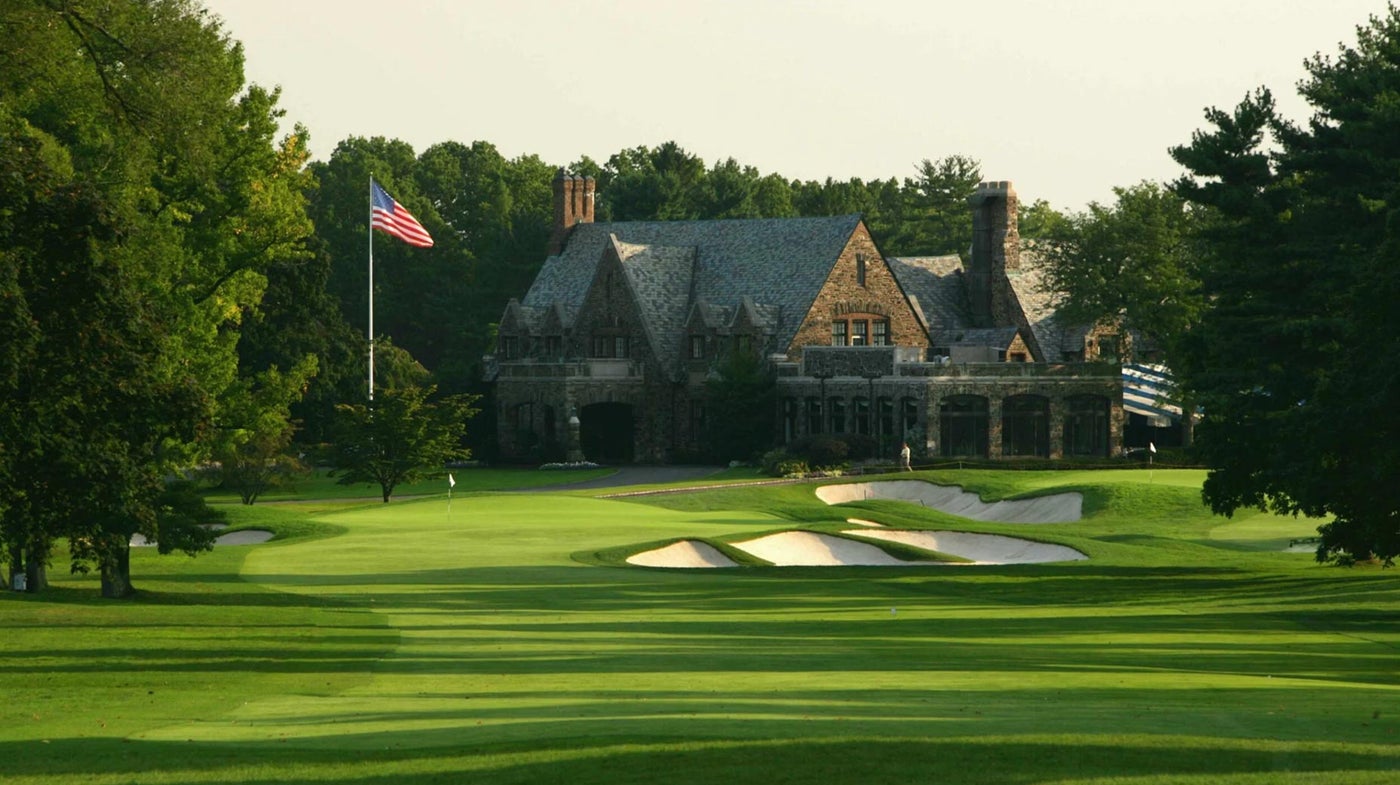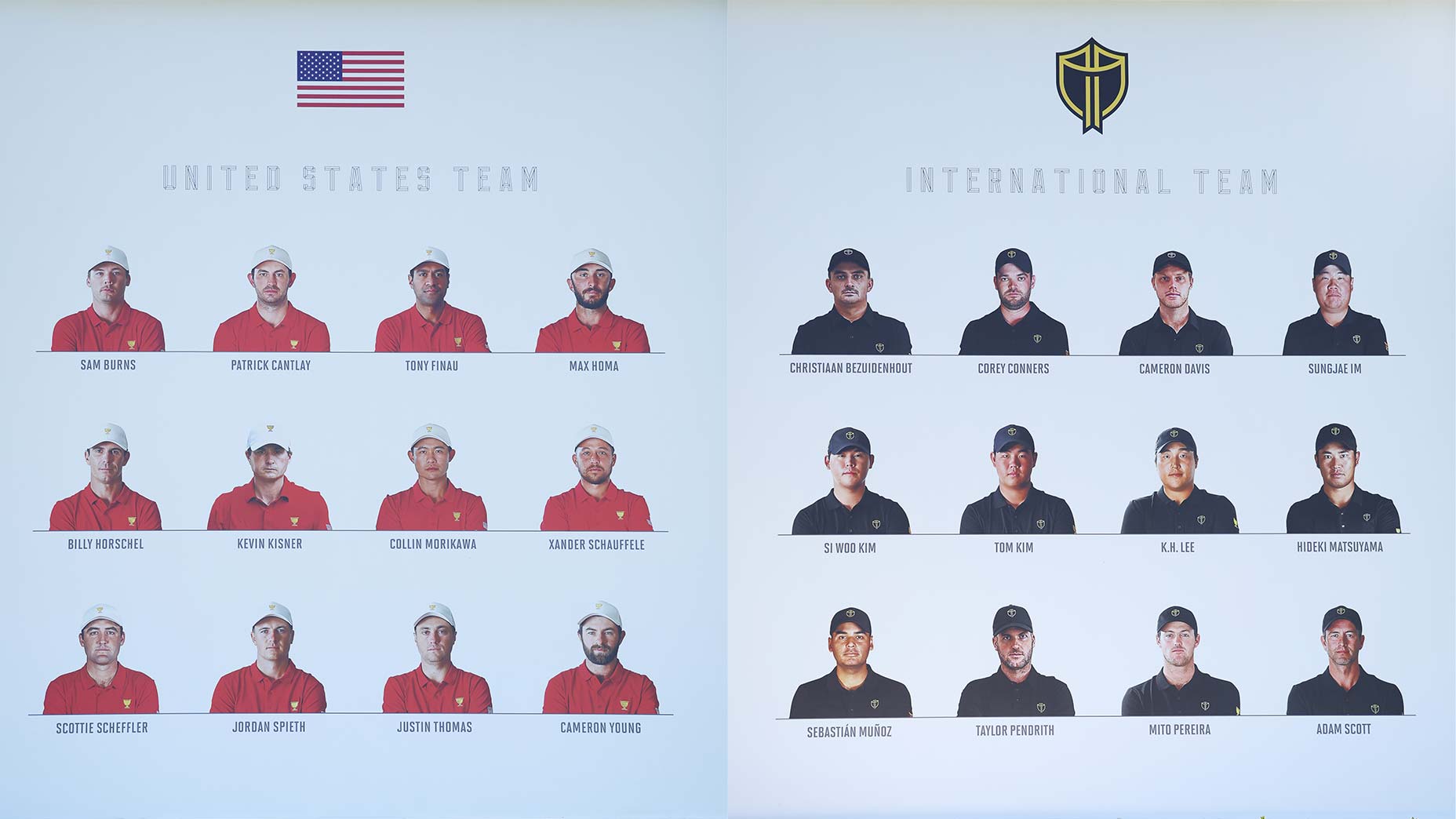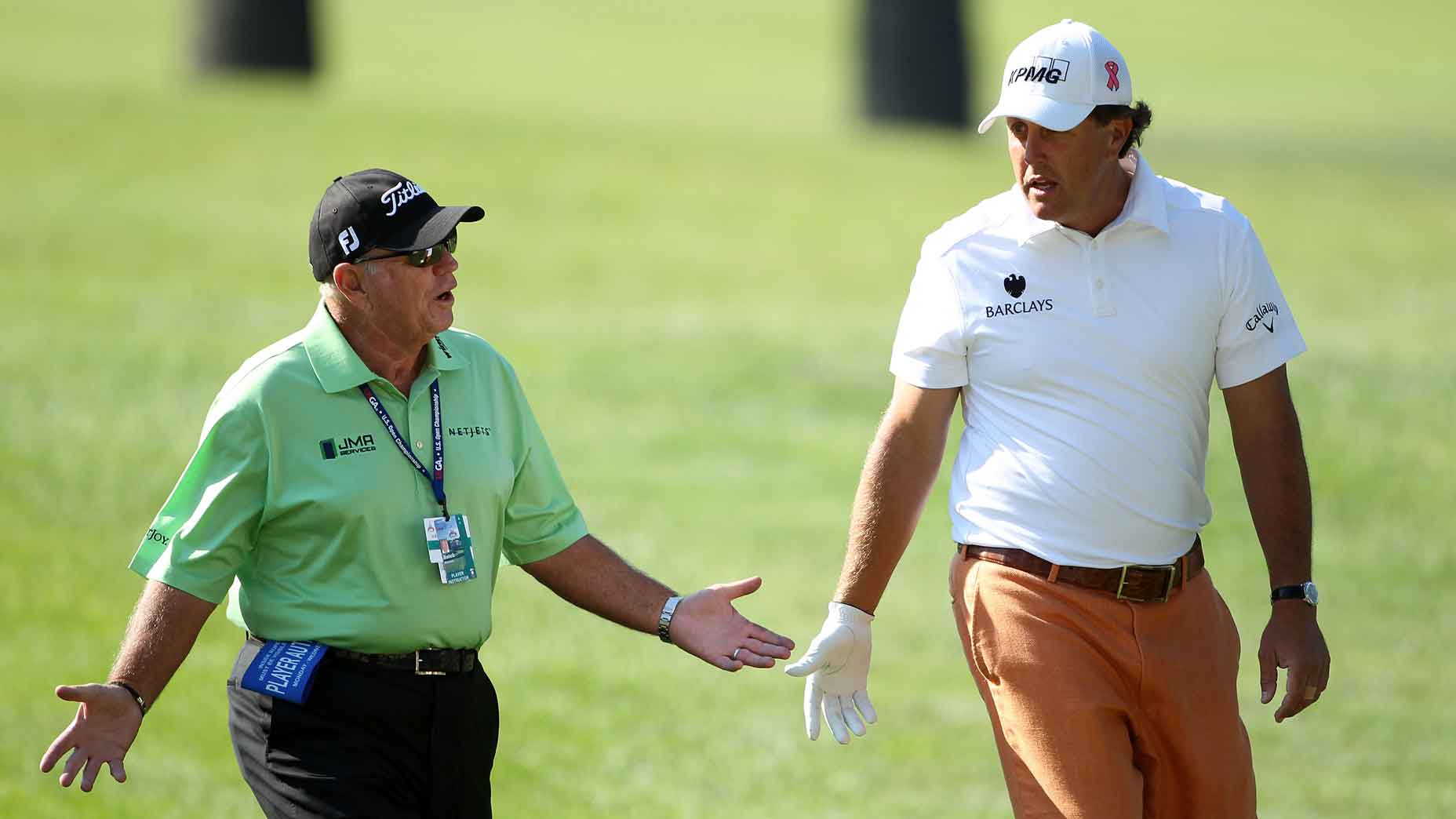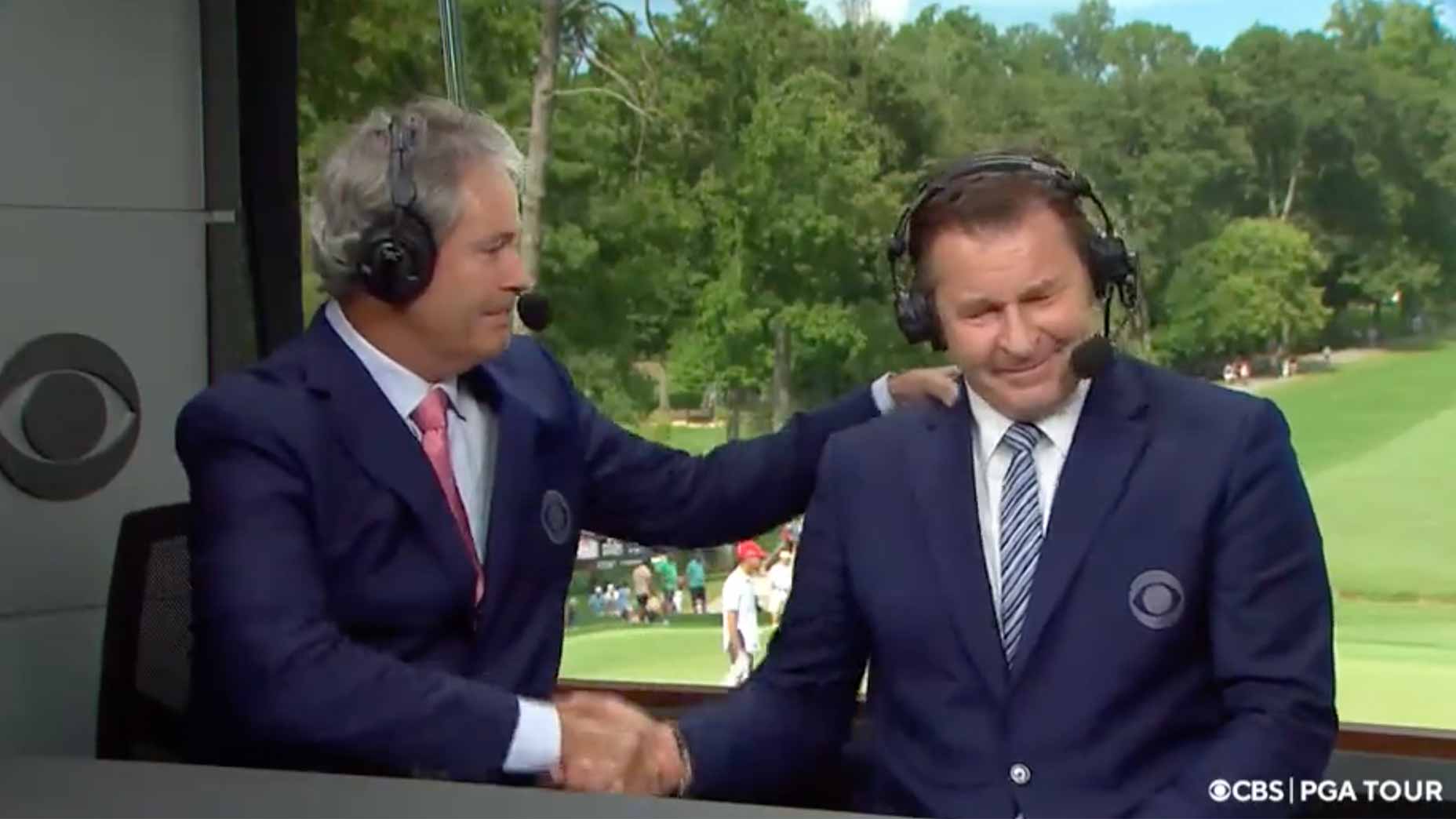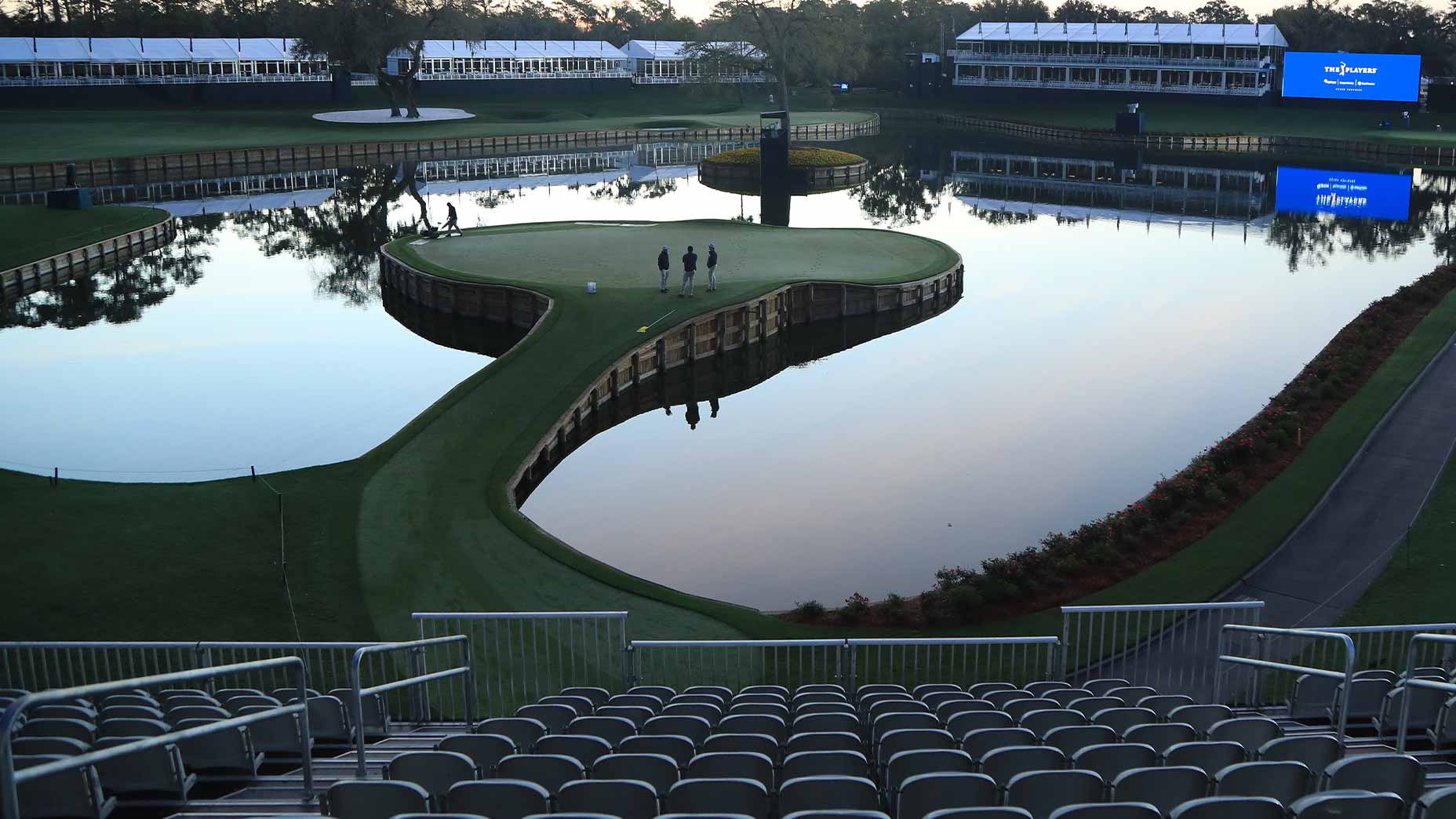We all get bit by the bug in different ways and most of us can remember how. Maybe 46 years from now somebody will type up a report on how they fell into golf’s spidery web during the Pandemic of ’20 and never looked back. As I have written too often — but also not enough — I was introduced to golf in an eighth-grade gym class at a public school in Patchogue, on the south shore of Suffolk County, on Long Island. That was in the spring of 1974, two score and six years ago. The U.S. Open that June was at Winged Foot, in Westchester County. Winged Foot was 60 miles and a world away. My first major.
I don’t remember if I watched the tournament on TV. I definitely followed it in our morning newspaper, dropped on our gravel driveway right about sunrise. Dave Anderson and Red Smith, New York Times sports columnists, were already heroes to me. I remember, through the gift of spilled ink on newsprint, player complaints about how hard Winged Foot was. That was the year Sandy Tatum of the USGA said, “We’re not trying to embarrass the best golfers in the world, we’re trying to identify them.”
Many years later, Sandy became, I would like to say, something like an intimate friend, though many would like to say the same and we can’t all be right. People were drawn to his sturdiness. The man as oak. He was the USGA. Winged Foot was the USGA. The name made you take notice. Winged Foot. Greek gods swooping in from on high, with sails for arms.
I recall, loosely, a quote from Trevino about the Winged Foot rough in ’74: “Your caddie would put the bag down to look for the ball and you’d lose the ball, the bag and sometimes the caddie.” Perfect. (Except for height, Trevino had every kind of gift a person can have, including the gift of hair.) I’ve often wondered how that quote settled in me. Via Red Smith? Or maybe Dave?

I made my first trip to Winged Foot a decade later, invited there for an offseason lunch/job interview. Probably in January or February 1985. I had never seen anything in golf like Winged Foot or its clubhouse, the scale of it all, the church-like sobriety. The clubhouse was thick. Not just the walls, everything. It was all mahogany and brass and the lunch beverages were served in glasses not designed for grandma.
I knew about Tillinghast, Winged Foot’s godfather, because of Frank Hannigan’s landmark piece about him in the USGA magazine, Golf Journal. “Give us a man-sized course,” the founding members told the architect. I wasn’t there to play on that winter day. I was an unlikely candidate to ever play Winged Foot. I mean, I barely got through the lunch. If Winged Foot doesn’t intimidate you the first time you pass through the gate, check your pulse. Westchester County has laws about driving while dead.
My second trip to Winged Foot was in 1997, for the PGA Championship, won by Davis Love. I was a writer for Sports Illustrated then, covering all manner of things (women’s beach volleyball!), but not that edition of glory’s last shot. Earlier that year, a book Davis had written, Every Shot I Take, was published. It’s Davis’s book but I helped with the typing, so I watched his progress through the first three rounds with keen interest. He and Justin Leonard were both at 203 and tied for first through three rounds, seven strokes ahead of the nearest chasers.
By then I had an A.W. Tillinghast course I could call my own, at the Philadelphia Cricket Club, and a standing Sunday morning game. (We played quickly, quietly and seriously. So much fun.) We were always done well before noon, if not 11. I holed out on the last, on the Sunday of that ’97 PGA, got in my car, drove to Winged Foot, sneaked onto the course and was greenside — first row, near Penta Love — when Davis holed out on the last, the winner by five, Brother Mark on the bag. Yes, the rainbow. Saw it. Right over Davis’s wet hair.

I snuck into his winner’s press conference in the press tent and walked into the clubhouse in Davis’s wake, through a thick mahogany door held open by a grown man.
Years later, Davis wrote a foreword to a new edition of The Little Red Book, by Harvey Penick, the legendary Texas golf instructor who looked in on Davis every day, via mental telepathy. I helped Davis with the typing. Simon & Schuster offered Davis I believe $7,500 for his efforts. He said, “Give it to Michael.” He knew I had tuition payments to make. A mensch, as they say at some of the other Westchester courses. Davis earned $470,000 when he won at Winged Foot in ’97, by the way. A fortune, but this week the Open winner will collect $2.25 million. It’s always a good time to be good at golf. This is an especially good time.
In ’99, I played Winged Foot for the first time, on the East Course, often said to be every bit as good as the West Course, where Davis and Bobby Jones and Billy Casper and other Hall of Famers have won. My host for that round, in a manner of speaking, was Davis. Our actual host was a man named F. Harlan Batrus, a longtime Winged Foot member and in the business of making money. Harlan loves golf, has a big house on the course and can talk golf well into the night. Davis and Fred Couples would stay with Harlan for different tournaments and Davis would oblige Harlan with detailed discussions of this Ryder Cup match or that one. Fred, in time, discovered an alternate door and path to his guest room.
Davis is an accomplished course architect and he can talk about the raised, tiered green on the long, bunker-free 17th hole of Winged Foot’s East Course right through the soup course. But when we talk about Winged Foot and its courses, he always returns to one thing above all else and that is atmosphere. Check him out:
“My favorite thing at The Foot is the classic clubhouse and the locker room. Those metal lockers, big enough for a tour bag. The old-school shower room. The massive sinks. You don’t see sinks like that at new clubs.
“You go to Winged Foot and you can just feel how many rounds have been played there, all the card games played there, all the stories that have been told there. You know that every big-name pro and businessman has been through there. The courses are beyond great. But I would join just for the locker room, for the clubhouse — and for the lunch.”
The courses are beyond great. But I would join just for the locker room, for the clubhouse — and for the lunch.
(A footnote regarding Davis’s shorthand: The Foot. He can say it. He’s earned it. A Roger Maltbie, a Ben Crenshaw, a Butch Harmon, they all can say it. If Roger sees a Winged Foot member, anywhere in the world, and Raja gets around, he’ll say, by way of greeting, “Been playing The Foot?” The rest of us should likely use first name and last.)
It’s loaded with subtext, what Davis said about Winged Foot. To start, we would likely all agree that playing golf presents a series of math and engineering problems, from the bright light of the 1st tee to the dark bottom of the hole on 18. Right? We all know what it takes to propel our ball, ideally in something like the appropriate direction. But the quality of the game that makes golf unlike any other sport is that riding herd on all that science, on all that data that Brandel Chamblee drills into so ably, are various ephemeral and even poetic things that may broadly be placed in a category labelled Atmosphere. Davis was giving us atmosphere.
Hale Irwin, below, went for her first cousin: Aura. (Yes, Curt Schilling is coming to mind for me, too, when he mocked the Yankees for how relentlessly they marketed Aura and Mystique and Destiny. “Those are dancers at a nightclub,” the big righthander once said. Winged Foot roots for the Yankees, by the way. A Met fan in Westchester County eats lunch by herself.)
OK, Hale Irwin won, ’74 at Winged Foot. You’ve probably seen the photos of him, wearing those wire-framed glasses. If ever a man looked well-suited to handling golf’s math and engineering problems, Hale Irwin at Winged Foot in ’74 would be your guy. But when I asked Irwin recently about what Winged Foot meant to him, he went right down Davis’s path. He went for atmosphere. He went for aura. His Tommy Armour, below, is the Silver Scot himself, winner of the 1927 U.S. Open:
“I was first at Winged Foot in 1967 as a member of the All-America golf team. We met Tommy Armour, who was sitting in a lounge chair near the 18th green. He showed us the strength in his hands by holding a club parallel to the ground between his index and middle fingers. The butt of the grip was on the pad of his middle finger and the rest of the club was on top of the index finger just shy of the nail. None of us could come close to doing that. That moment established Winged Foot’s aura for me. At Winged Foot, aura comes first.”

How cool, that the man who won the 1990 U.S. Open knew, at least for a few minutes, the man who won the 1927 U.S. Open. Winged Foot brought them together. Tommy Armour was not a pro at Winged Foot, as I had always thought. Armour lived in the era when club pros changed their shoes in the parking lot. They weren’t considered gentleman golfers. When Arnold Palmer became a dues-paying member of Augusta National, that was a big deal, new territory in the game’s social development.
Butch Harmon, whose father was the longtime pro at Winged Foot, recently got me straight on Armour and the club. Armour was a member. Winged Foot was his hangout. Butch grew up at Winged Foot, along with his golf-obsessed brothers, Dick, Craig and Billy. “That’s one of the things about Winged Foot that sets it apart,” Butch told me. “People might say it’s a blueblood club, but they don’t know it. There are a lot of members at the club who made it on their own, in real estate, construction, contracting, trucking. There are Wall Street guys. There’s inherited wealth. But many of the members started something, did something, and earned their way in that way. What they all do is love golf. You’re not getting in without that.” So Tommy Armour, cooling his jets in a lounge chair beside the 18th green, that day when Hale Irwin and the ’67 All-America golf team met him. Hubert Green was on that team, too. Green had a T26 finish in the ’74 U.S. Open. He was trending himself.
By the way, and this is not your everyday by-the-way, when Irwin won in ‘74, other players in the top-10 included Arnold Palmer (the 1960 winner), Gary Player (’65), Lou Graham (‘75), Tom Watson (’82) Tom Kite (‘92) and Big Jack (’62, ’67, ’72, ‘80). I had no chance. I fell for golf. I had to be living large, that June week in 1974, a bowl of Cap’n Crunch under my chin, alongside Red Smith and Dave Anderson.
Dave was a peach. Years later, by dint of alphabetical seating in different press boxes, we sat near one another. Dave, who died in 2018 and wrote some mega bestsellers, loved Winged Foot, wrote about it often and would have been just the kind of Winged Foot member Butch was talking about. But Dave was happy playing on his side of the Hudson River, at Knickerbocker, a Donald Ross course in Tenafly, N.J. As a reporter, Dave got stuff nobody else did. In 2006, the last time the U.S. Open was at Winged Foot, Dave captured this little exchange between Tiger Woods and Mike Davis for the benefit of his readers. This is how he wrote it and it’s perfect:
“When are you going to get the greens faster?” Woods said.
Davis wasn’t sure if Woods was serious or joking, but it didn’t matter.
“What you have,” Davis said, “is what you’re going to get.”
I am nearly certain Tiger was joking. That’s how his sense of humor runs. Also, the Winged Foot greens have so much slope. They’re always fast. There are many stories about four-putt greens in events major and minor there. Likely some five-putt greens, too.
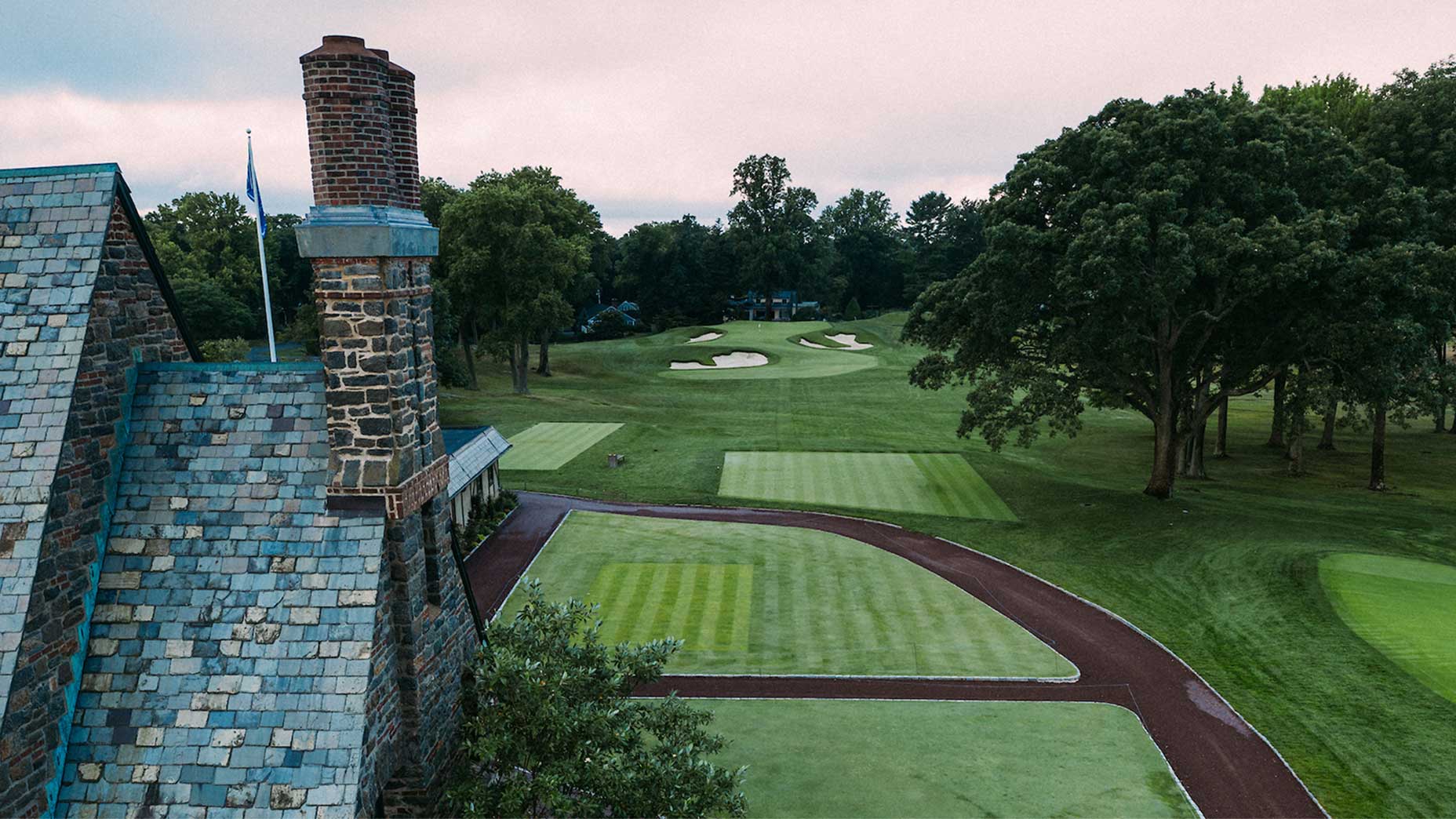
“The stories are everywhere,” Jim Nantz, the CBS broadcaster and a member, told me when I asked what he found most endearing about the club. (Dan Hicks of NBC, Mark Loomis of Fox Sports and Jerry Tarde of Golf Digest are also members.) Nantz, without notes, can rattle off various Winged Foot names, famous and otherwise, and he knows all the details of their stories. Now he’s talking about Al Espinosa at the 1929 U.S. Open at Winged Foot. (Al had one of the oddest second-place finishes ever, losing to Bobby Jones in a 36-hole playoff by 23 shots.)
Now he’s talking about Jackie Pung at the 1957 U.S. Women’s Open. (Jackie had the tournament won by a shot but was disqualified for signing an incorrect scorecard. The club members passed the hat and wrote her a check for the winner’s share, $1,800.) Now he’s talking about Phil’s finish, III’s rainbow, Fuzzy’s white towel. All good golf courses produce stories. Witness the writing career of P.G. Wodehouse and John Updike. Winged Foot produces more than most.
When you talk to Dan Hicks about the place, you realize he has a sort of novelist’s eye. He’s very funny, off-camera, wry and observant. One of the things he appreciates most about his golf at Winged Foot is the intra-round conversation: it’s about golf. “You’ll never hear somebody talking about somebody else’s private jet,” he told me.
He talked about the “sound of clanging metal when guys shut their locker room doors.” He talked about how everybody playing on any day, whether they are playing the East Course or the West, will eventually pass through the grill room, “golf glove in their back pocket.” He talked about the quality of the ginger snaps and peanut butter at the grillroom bar and the sturdy barmen presiding over it, with a special nod to Oscar Salgado. He noted how the Winged Foot caddie yard doubles as a United Nations and talked about a Winged Foot caddie from Scotland named Dawn with the Winged Foot logo — a foot with a wing at the ankle and two clubheads coming through the heel — she had tattooed on her ankle. He talked about the quality of Winged Foot’s rye bread. You’re in New York now.
I’ve seen the tattoo. I’ve had Dawn carry my bag more than once at Winged Foot, and have logged a good number of rounds there, courtesy of my friend Jim Courier, excellent righthanded tennis player, good lefthanded golfer. Jim was drawn to Winged Foot for a variety of reasons but the first on the list is the club’s spirit of camaraderie. Between the practice putting green and the first tee, Jim will stop a half-dozen times to talk with this person or that one.
He always plays a match (my preference, too) and he always knows how things stand. He always knows the names of the caddies and something about them. (Dawn’s husband is a cop.) You’d be hard-pressed to find any Hall of Famer from any Hall of Fame more interested in other people than Jim. He likely knows on one of our 36-hole days at Winged Foot I played with one ball, because the chances of me not telling him are zero. Despite their intimidating reputation, the Winged Foot courses are very playable and enjoyable. The greens are, let us say, challenging.
At Winged Foot, you’ll never hear somebody talking about somebody else’s private jet.
I’m writing this from the Crowne Plaza Hotel in White Plains, about six miles from the course, Monday of U.S. Open week. There will only be about 40 reporters at Winged Foot this year and I’m lucky to be one of them. I’m awaiting my results from my Covid-19 test. When Donald Trump, a Winged Foot member, had a Covid-19 test in May, he said he “tested positively toward negative.” If I have the same result, I’ll be on the course this afternoon, watching the fellas practice from a distance greater than six feet. There will be no sneaking in this year.
The last time I was at this Crowne Plaza was for the 2006 U.S. Open. (On Sunday night that year, I was about six feet, more or less, from Geoff Ogilvy when Phil tapped in for a double bogey on the last, making Ogilvy the winner by a shot. The look on his face, as he watched it unfold on TV, was just so cryptic, like he really couldn’t completely process what had happened. When I asked Ogilvy recently if I was reading that correctly, he said, “That’s pretty much on point.”) The Crowne Plaza’s color scheme, then as now, is brown. There’s a little brown antique map on brown wallpaper above my brown lamp that, oddly, notes Patchogue but not White Plains or Mamaroneck, where Winged Foot resides. I remember eating dinner with Duffy Waldorf here in 2006. He talked about wine. I know nothing about wine but it was interesting, as learning about anything is.
My host for that winter lunch at Winged Foot in 1985 was Jerry Tarde. I was 24 and Jerry was probably 28. I didn’t know what I was doing, then or now. Jerry did then and does now. He was already the editor of Golf Digest. (I was trying to become a Tour caddie.) He joined Winged Foot at 22. Wodehouse had a character, The Oldest Member. That was not Jerry, despite the uncommonly mature manner he had, even then. A recent (and slightly edited) text from him:
“I joined the club in 1979 and used it for business golf/lunches a lot in those days. Unfortunately, I don’t recall the purpose or what we talked about. Then as now, it’s a wonderful environment that evokes a passion for the game everywhere you look. From Bob Jones’ 1929 U.S. Open scorecard — five straight 3s! — behind glass in the hallway to Claude Harmon’s King Hassan II cup in the trophy case and the painting of Nibs Nobles in the club anteroom, all of which existed in the mid-1980s when we would have met, and all significantly upgraded and still on display now. My favorite memories from that period were the all-day golf marathons — showing up at 8 a.m., getting paired by the locker room attendants, playing East or West, then lunch and another nine, followed by big-head showers, sauna, another shower, a haircut by club barber, gin rummy in the card room, maybe some short-game practice on the huge putting green, dinner on the terrace and the drive home. Pre-marriage, pre-kids, pre-internet, in the simple days when journalism was print-only.”
OMG.
I have been scouring the morgue (old-time newsroom jargon for what is now known as a Google search) for the Trevino quote about losing the ball, the bag and the caddie. So far, I’ve come up empty. I did see that in 1974, Red Smith opened a column with this familiar scene:
“A member of the Winged Foot Golf Club lost a ball in the rough the other day. He dropped a second ball over his shoulder and couldn’t find that, either.”
No, that wasn’t the lost ball rule then. Yes, you did drop over your shoulder then. The point is, Smith was writing on the eve of an Open at Winged Foot. People were talking about the rough. And here we are, 46 years later. One-hundred and forty-four golfers are playing in the U.S. Open at Winged Foot this week. Some will hope to make the cut, some will hope to win the thing. At some point in the week, they’ll all encounter something intimidating. The rough. The shower heads. The occasion. Something.
Here we go.
Michael Bamberger may be reached at Michael_Bamberger@Golf.com
